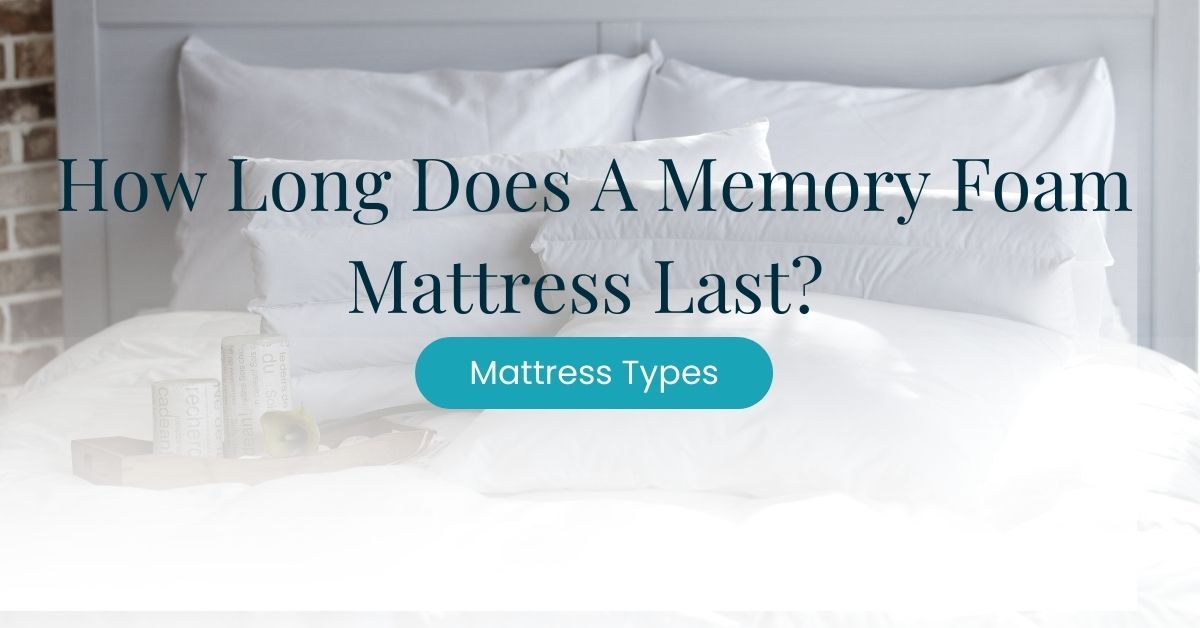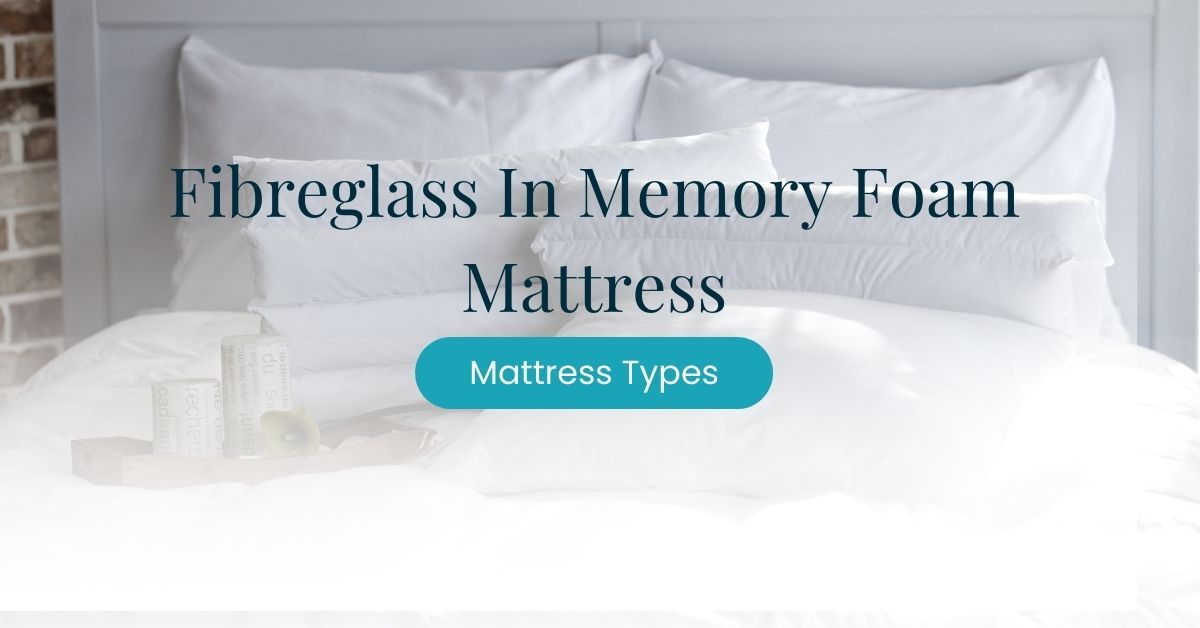Are you tired of waking up with aches and pains, despite owning what’s supposed to be a comfortable mattress? Do you find yourself sinking into your mattress, unable to find the support you need for a good night’s sleep?
If so, you’re not alone. Many mattress owners find that over time, their mattress loses its firmness and can no longer provide the support they need. But there’s good news.
You don’t have to suffer through poor sleep and discomfort any longer. There are many ways to make a mattress firmer, and we’ll be covering memory foam and pillow tops firmness issues too.
Whether it’s a firm mattress topper, adding a board under the mattress, or rotating and flipping your mattress regularly, the result will be no more waking up feeling like you’ve been in a battle. No more tossing and turning. No more discomfort.
With a firmer memory foam mattress, you’ll be able to achieve the deep, restful sleep you deserve. So don’t wait, take action now and start enjoying a better night’s sleep.
Solution 1: Swap it for a Firmer Mattress
The easiest solution to increase mattress firmness is to get a firmer mattress. Take a look at online mattress reviews and keep in mind that latex mattress types are ‘firmer’ than other types.
You can try out the same type of mattress belonging to different brands and make a comparison. It’s helpful to have a personal benchmark on what’s “firm” and try a labelled medium-firm mattress. Here are some popular mattress brands and their trial periods:
Do note that other mattress models may have unique features that can influence your perception of firmness—these ones have zoning features that accommodate the human body’s physique when lying down.
Also, consider buying a new mattress only when all the other methods we listed here fail.
Solution 2: Use a Firm Mattress Topper
Another method is to use a firm mattress topper, which is a more budget-friendly option than buying a new mattress. Mattress toppers are put on top of your mattress to alter your bed’s overall feel, with some making it feel softer or firmer.
The topper type also plays a good role in how firm it is. For example, a latex mattress topper is the firmest material type and is also the most resilient. So, this is what you’re looking for although keep in mind that they’re normally more expensive than other materials.
We quite like Emma’s flip topper, which can flip between a firm and soft firmness, giving you a versatile choice. Marks and Spencer also has a mattress topper collection worth looking out for.
Solution 3: Add Plywood Between the Mattress and the Bed Frame
Adding a piece of plywood between your mattress and bed frame can help firm up the feel of your bed. Often, a softer mattress might feel too soft if it sits on flexible slats or a highly sensitive box spring.
This helps to equalise the weight distribution of your body weight and mattress weight across the surface of the bed frame. To do this, placing a plywood board beneath your mattress is sufficient.
The plywood ensures an equal weight distribution, making your mattress feel firmer than if it sat on flexible slats and softening frames such as box springs. You can also use other durable boards, such as gypsum if you don’t have plywood around.
Solution 4: Invest in a New Bed Frame or Slats
A new bed frame or bed slats can alter the feel of your mattress. Both can help firm up your mattress, but you’ll need to buy them based on their stiffness.
As mentioned in step 3, some bed frames have flexible slats that allow the mattress to be softer. Some frames and slats make your mattress firmer and are particularly stiff to isolate movement.
Metal bed frames and metal slats are a good choice if you’d like your bed to be firm. Since metal is commonly stiff, your mattress would be significantly supported and make it firmer than before.
However, you can also choose wood frames and slats that are less flexible to maintain a balance between too firm and too soft. To check this, lightly push downwards on the slats and see if they curve a bit.
Solution 5: Flip or Rotate Your Mattress Regularly
As part of mattress care and maintenance, flipping or rotating your mattress can make it feel firmer. Sagging may occur without flipping or rotating your mattress, as well as quicker degradation of the surface layers.
However, suppose you regularly flip or rotate your mattress (say once every three months). In that case, you’ll notice your mattress feels firmer and more supportive as the comfort layer’s surface is equally subjected to pressure.
Nonetheless, take note that not all mattresses can be flipped or rotated. For example, most mattresses are single-sided. Single-sided mattresses can’t be flipped, or you risk damaging the comfort layer.
Some mattress models also have unique premium features, such as pressure zoning. A mattress with this feature has different surface firmness levels that individually conform to different pressure zones in your body. These mattresses shouldn’t be rotated to avoid damage.
Solution 6: Place Your Mattress on the Floor
Placing your mattress flat on the floor is a great way to make your bed feel firmer. A flat solid surface can effectively equalise weight distribution in your mattress meaning your body wouldn’t sink too much.
A flat, solid surface allows the mattress to retain its shape, eliminating softness and sagging issues. But before you put your mattress on the floor, make sure to do the following:
– Clean the floor.
– Ensure that the floor is completely dry and moisture-free. –
– Check if there are insects in nearby walls and furniture, and exterminate them if necessary.
– Use a mattress protector on the bottom side of the mattress.
As there’s reduced ventilation, you should also move your mattress onto its side regularly to keep mould and mildew away.
Solution 7: Air the Mattress Out
Ever noticed how a brand-new sponge feels firm, and when it’s wet, it becomes softer? The same principle applies to mattresses, especially foam-based ones.
If your mattress is damp for one of these reasons, they may be the culprits why your mattress feels soft:
– A build-up of sweat, urine, blood, or vomit
– A spilt beverage in the form of sweet drinks, liquor, or plain water
– A humid environment inside your room and outside
Keep your mattress dry by airing it out regularly. You can do this by using an electric fan or your air-conditioner’s dehumidifying function (though we recommend using a fan as it’s quicker).
Be careful not to sun-dry memory foam or latex mattresses as they can be damaged, especially when the sun’s rays are at their peak (from 10 AM to 4 PM).
Solution 8: Replace the Box Spring
Sometimes, your box spring may make your mattress much softer than intended. In these cases, replacing the box spring (or even ditching it out) can be a good solution.
To understand this solution further, it’s best to know first that a box spring is meant to soften the feel of a mattress. Metal coils inside a box spring absorb pressure and weight, making the bed feel lighter and softer.
If your box spring feels particularly springy and causes slight sinking, you can replace the existing ones with thicker metal coils. Thicker coils are slightly less sensitive than thin ones, which makes your bed feel firmer.
Another option is to completely cease using a box spring. You can place your mattress on the floor or use a bed frame with slats instead.
Solution 9: Use a Bed Wedge to Firm Up the Sheets
If you’re having difficulty sleeping on a soft mattress because of your back pain, you can use a bed wedge to alleviate your situation. Bed wedges are triangular pillows commonly made out of PU (polyurethane) foam.
They support your spine when lying down and give your back ample support when sitting up. They can also be used to firm up the feel of your mattress, as wedges are thick and firm too.
To reap the most benefits, use wider and lower bed wedges to cover more surface area and accommodate your body even more than a smaller one. Wedges benefit back and stomach sleepers the most, so if this sounds like you then take a look.
Solution 10: Change Your Bedroom Temperature
One unique way to make a soft mattress firmer is to change your bedroom’s thermostat. If you have a memory foam mattress, changing the room’s temperature might help you out.
Memory foam mattresses usually become softer when the room is warm and tenses up when the room is cool. In your case, you’ll need to lower the thermostat to make the room cool.
If you still feel your bed is too soft, lower the thermostat again and see if your mattress reacts to the temperature. However, the downside with this solution is you’ll need to wear warm clothes if you’re sensitive to cold temps.
Nonetheless, this is a simple hack you can try if your firm mattress is 100% memory foam.
Are There Specific Tips To Make A Memory Foam Mattress Firmer?
Most of the tips above will work well with a memory foam mattress, especially the firmer mattress topper, rotating or flipping the mattress and changing the bed foundation.
Memory foam tends to lose its firmness due to excessive wear and tear (lack of rotating or flipping!). Especially if there’s a couple or heavier individuals sleeping on it, temperature and humidity.
You can combat humidity if you live in a hot area by using the dry setting and a lower temperature on your air conditioning unit.
What About making a Pillow Top Firmer?
The best tips that we can give for pillow tops include:
- Rotating the mattress 180 degrees every 1-2 months to even out the wear and tear and allow compressed regions to uncompress.
- Adding a firm latex mattress topper. Latex is firmer than other materials and still really comfortable.
How to Get Support for Your Mattress Without a Box Spring?
You can use other bed frames with slats, or you can use the mattress as is on the floor. However, if you’re looking for a great support structure for your mattress, we recommend using a standard bed frame with slats.
A bed frame with slats provides ample stability and movement isolation for your mattress. For better convenience, some bed frames also have additional features, such as headboards and footboards.
Nonetheless, if you’re on a budget, placing your mattress on a flat, solid, and clean floor will be sufficient for a short period until you can buy a fully-fledged bed frame to use.
Does a Mattress Pad Work the Same as a Mattress Topper?
Yes, mattress pads and mattress toppers are placed on top of your existing mattress to alter the overall feel of your mattress. The main differences between a pad and a topper are:
- Thickness. Mattress toppers are significantly thicker than mattress pads. Topper thickness ranges from 2 inches up to 4 inches thick. Pad thickness ranges from 1 to 2 inches.
- Type. Mattress toppers have a variety of types: memory foam, latex, wool, down and feather, and microfibre. Pads have a bit less: cotton, microfibre, wool, and down and feather.
- Durability. Toppers are significantly more durable and long-lasting than pads. Since toppers are thicker and use more engineered materials, they are usually more durable.
- Comfort. Toppers again trump pads when it comes to comfort. Since toppers use various materials and have a generous thickness, they are almost always more comfortable than pads.
Why is a Firm Mattress Important?
A firm mattress is not always bad; in fact, firmness plays an important role when sleeping. The following reasons make firm mattresses necessary:
- Gives your body ample, generalised support. In fact, most accommodations use medium-firm mattresses as a baseline between soft and firm to accommodate different sleeping positions.
- Helps align your spine optimally. Sleeping on a firm mattress helps align your spine. Soft mattresses tend to make your hips sink, interrupting proper spinal alignment. Proper spine alignment is necessary to prevent and reduce back pain.
- Ensures proper weight distribution. Pressure points in your body become strained when sleeping on a mattress that’s too soft. In a firm mattress, pressure points are relaxed, helping you wake up with little to no pain.
Is a Firm Mattress Better for Your Back?
Yes, firm mattresses are better than soft ones for your back. As mentioned, firm mattresses provide ample, generalised support for your body while promoting healthy spinal alignment and optimal weight distribution.
Since the spine and hips carry much of the human body’s weight, it makes sense to have an excellent mattress to support them while you sleep. A soft mattress may cause your lower back to sink, straining it further.
So in this sense, we recommend using a firm mattress if you’re a back sleeper, especially if you have recurring back problems. We also recommend visiting your GP for appropriate guidance if you have chronic back conditions.
How Can I Make My Mattress Firmer on One Side?
Yep! You can do this by buying a mattress pad or a mattress topper. Couples usually ask this question, and it’s understandable. To make your mattress firmer on one particular side, follow these tricks:
1. If you have a queen or king-sized bed, buy a single-sized mattress pad or mattress topper (we recommend purchasing a topper, though).
2. Place the pad or topper on your desired side, and secure it by putting weights on top (such as pillows, folded weighted blankets, etc.).
3. You’re set.





